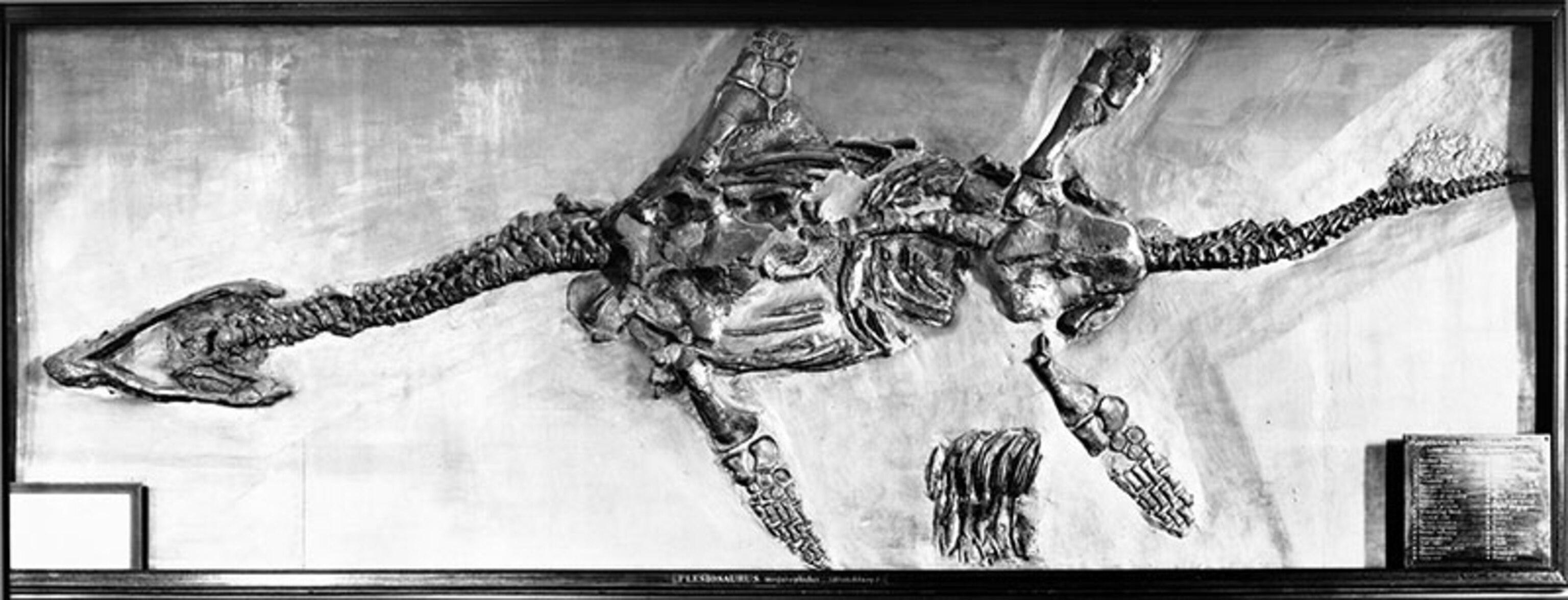Name: Atychodracon megacephalus
Meaning: Atychodracon means “unfortunate dragon”, while megacephalus translates to “big head.”
Age: The earliest Jurassic, about 200 million years ago.
Where in the world?: The Blue Lias Formation of England.
What sort of critter?: Atychodracon is a plesiosaur – a four-flippered marine reptile distinct from dinosaurs.
Size: Approximately 16 feet long.
How much of the creature’s body is known?: Casts of a complete skeleton, two partial skeletons, and an intact complete skeleton.
Claim to fame: Atychodracon was a casualty of war. On November 24th, 1940, German bombers hit the Bristol City Museum and Art Gallery, totally destroying the original, spectacular specimen. But all was not lost. Thanks to photos and casts made of the skeleton, paleontologist Adam Smith has been able to determine that this animal – originally described as a species of Plesiosaurus – belonged to a previously unknown genus of marine reptile. And while the original skeleton cannot be replaced, fossil finders have turned up additional specimens of Atychodracon. The “unfortunate dragon” has been revived.
[Note: This is a continuation of the Paleo Profile feature I started over at Dinologue.]
Reference:
Smith, A. 2015. Reassessment of ‘Plesiosaurus’ megacephalus (Sauropterygia: Plesiosauria) from the Triassic-Jurassic boundary, UKReassessment of ‘Plesiosaurus’ megacephalus (Sauropterygia: Plesiosauria) from the Triassic-Jurassic boundary, UKReassessment of ‘Plesiosaurus’ megacephalus (Sauropterygia: Plesiosauria) from the Triassic-Jurassic boundary, UK. Palaeontologia Electronica 18.1.20A: 1-20.

